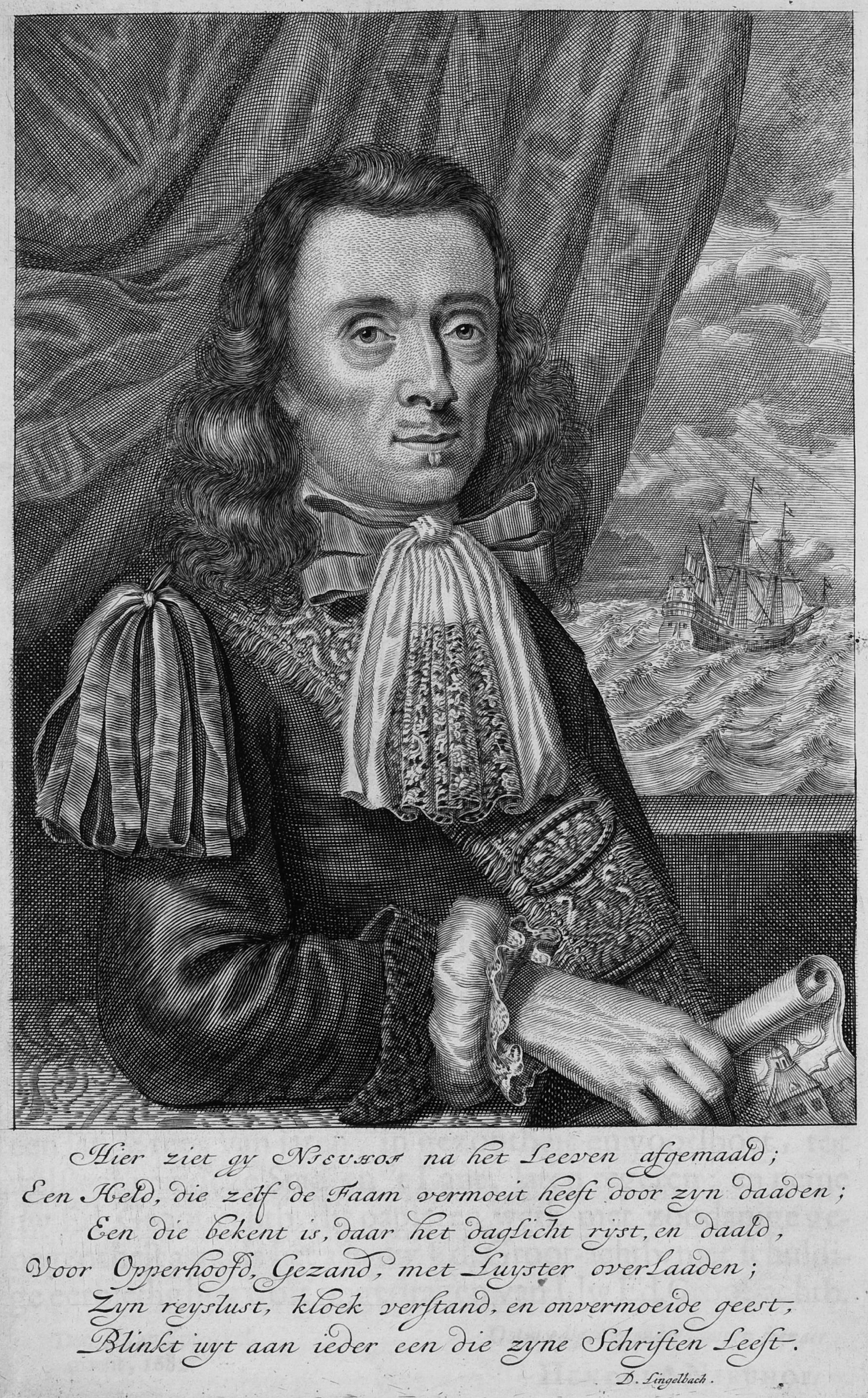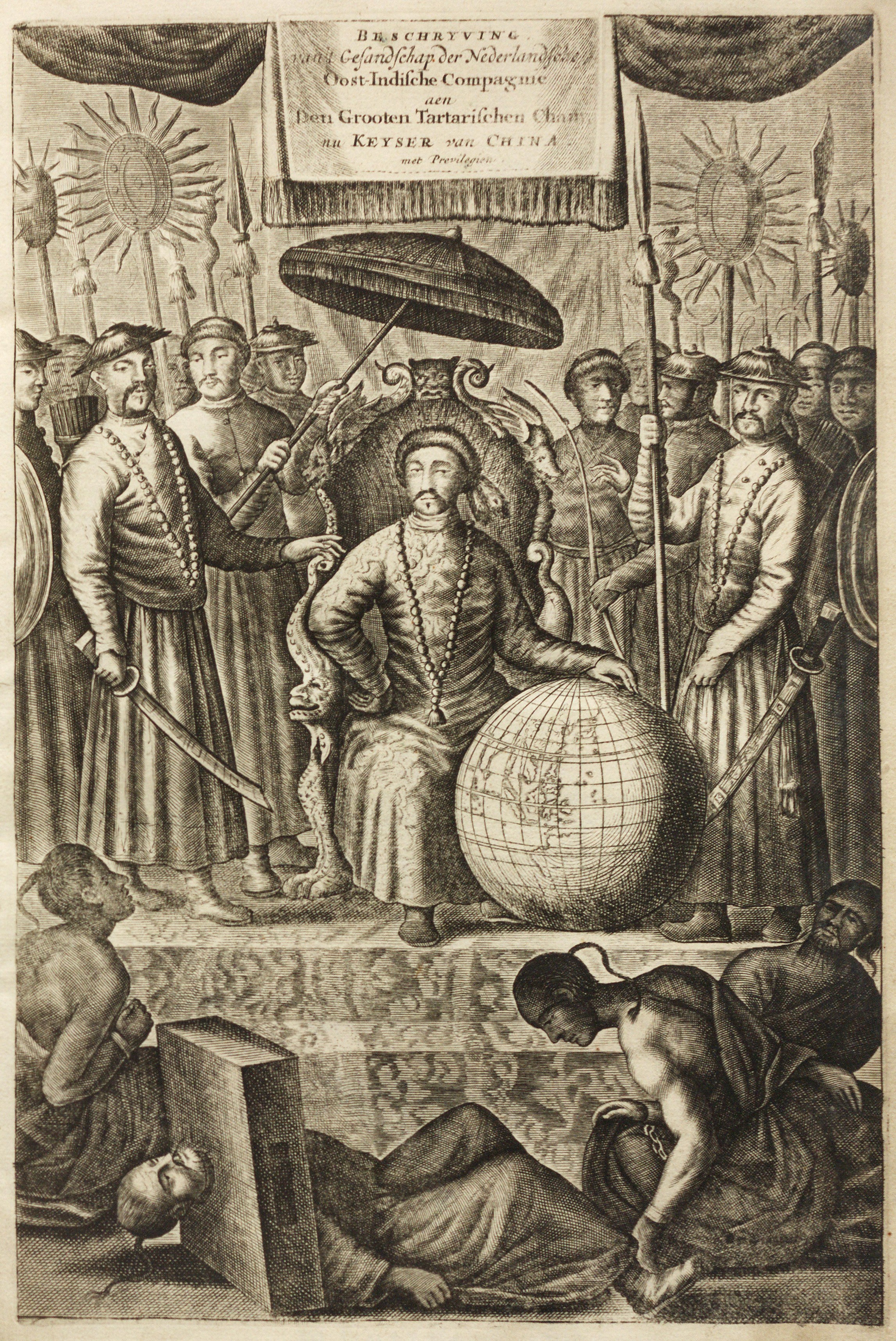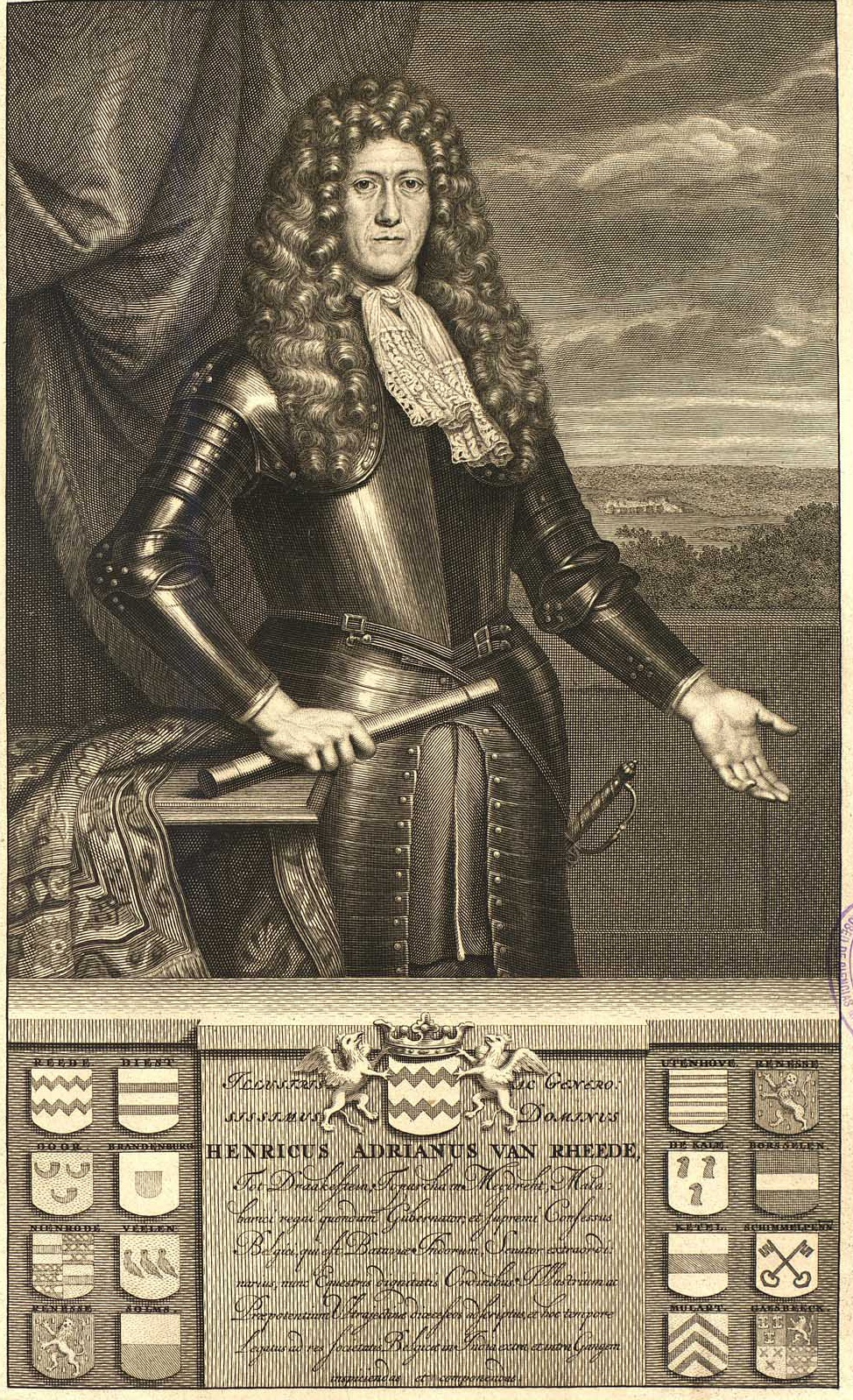|
Johan Nieuhof
Johan Nieuhof (22 July 1618 in Uelsen – 8 October 1672 in Madagascar) was a Dutch traveler who wrote about his journeys to Brazil, China and India. The most famous of these was a trip of from Canton to Peking in 1655-1657, which enabled him to become an authoritative Western writer on China. He wrote An embassy from the East-India Company containing the written account of this journey. Biography Johan Nieuhof was born in Uelsen, a town in the county of Bentheim, Lower Saxony, sitting just across the Dutch-German border. His father (originally from Zwolle) was mayor of the town, and was later succeeded by one of Johan's brothers and brother-in-law. By the grace of Cornelis Jan Witsen, a leading figure within the Dutch West India Company (or "WIC"), Nieuhof left for Dutch Brazil in 1640 as a reserve officer-candidate. From then on, barring two short family visits in 1658 and 1671, he spent all the rest of his life abroad. Nieuhof was employed in Brazil to explore the regi ... [...More Info...] [...Related Items...] OR: [Wikipedia] [Google] [Baidu] |
An Embassy From The East-India Company
''An embassy from the East-India Company of the United Provinces'' is a book written by Dutch author and explorer Johan Nieuhof. The book served as a major influence in the rise of chinoiserie in the early eighteenth century. Full title The full title of the Dutch version of the travel account, published in 1665 by Jacob van Meurs was: The English translation, published by John Ogilby in 1669, was titled: ''An embassy from the East-India Company of the United Provinces, to the Grand Tartar Cham Emperor of China: deliver'd by their excellencies Peter de Goyer and Jacob de Keyzer, at his imperial city of Peking, wherein the cities, towns, villages, ports, rivers, &c. in their passages from Canton to Peking, are ingeniously describ'd also an epistle of Father John Adams their antagonist, concerning the whole negotiation; with an appendix of several remarks taken out of Father Athanasius Kircher; English'd, and set forth with their several sculptures.'' These titles are abbrevia ... [...More Info...] [...Related Items...] OR: [Wikipedia] [Google] [Baidu] |
Second Battle Of Guararapes
The Second Battle of Guararapes was the second and decisive battle in a conflict called the Pernambucana Insurrection, between Dutch and Portuguese forces in February 1649 at Jaboatão dos Guararapes in Pernambuco. The defeat convinced the Dutch "that the Portuguese were formidable opponents, something which they had hitherto refused to concede." The Dutch still retained a presence in Brazil until 1654 and a treaty was signed in 1661. Background Facing an uprising by the Portuguese planters in Dutch Brazil and having concluded a Peace Treaty with the Spanish in 1647, the Dutch sent an expeditionary force to Brazil, consisting of 41 ships with 6000 men. This expeditionary force arrived late in Recife (''Mauritsstad'') and faced numerous problems. In April 1648, the Portuguese routed the expeditionary force at the First Battle of Guararapes, fought outside Recife. History The Dutch forces, led by Colonel Brinck, left Recife on February 17, 1649, and fought the Portuguese at ... [...More Info...] [...Related Items...] OR: [Wikipedia] [Google] [Baidu] |
Zacharias Wagenaer
Zacharias Wagenaer (also known as ''Wagener'', ''Wagenaar'' and ''Wagner'') (10 May 1614 – 12 October 1668) was a German-born Dutch clerk, illustrator, merchant, member of the Court of Justice, opperhoofd of Deshima and the only German governor of the Dutch Cape Colony. In 35 years he traveled over four continents. Biography Early life and career Zacharias was the son of a Saxonian judge and a painter. In 1633 he traveled from Dresden via Hamburg to Amsterdam. There he worked for Willem Blaeu. Within a year he enlisted as a soldier in the armed forces of the Dutch West India Company to serve in "New Holland" (Dutch Brazil) in 1634. Three years later, he was hired as a writer by the newly arrived governor of the colony, Count John Maurice, Prince of Nassau-Siegen. In Recife he kept a sort of diary with 109 water-colour drawings of curious fish, strange birds, useful and harmful animals, lovely tasty fruit and nasty, poisonous worms and big, brown or black people, published as " ... [...More Info...] [...Related Items...] OR: [Wikipedia] [Google] [Baidu] |
Joan Maetsuycker
Joan Maetsuycker (14 October 1606 – 24 January 1678) was the Governor of Zeylan during the Dutch period in Ceylon and Governor-General of the Dutch East Indies from 1653 to 1678. He was appointed as Governor of Zeylan on 24 March 1646 and was governor until 26 February 1650. He was succeeded by Jacob van Kittensteyn. Maetsuycker studied law in Leuven, and was a lawyer first in The Hague, and later in Amsterdam. From 1636, he lived in the Dutch East Indies. In 1646 he became the third Dutch governor of Zeylan, and seven years later, the Governor-General of the Dutch East Indies. He stayed on that post for 25 years, which is the longest period for any governor-general. The Dutch colony in the Indies flourished under Maetsuycker. Under his rule, the Portuguese lost Ceylon (1658), the coast of Coromandel (1658) and Malabar (1663); Makassar was conquered (1667), the west coast of Sumatra was occupied, and the first expedition to the interior of Java was held. In 1663 his wife, Hae ... [...More Info...] [...Related Items...] OR: [Wikipedia] [Google] [Baidu] |
Macau
Macau or Macao (; ; ; ), officially the Macao Special Administrative Region of the People's Republic of China (MSAR), is a city and special administrative region of China in the western Pearl River Delta by the South China Sea. With a population of about 680,000 and an area of , it is the most densely populated region in the world. Formerly a Portuguese colony, the territory of Portuguese Macau was first leased to Portugal as a trading post by the Ming dynasty in 1557. Portugal paid an annual rent and administered the territory under Chinese sovereignty until 1887. Portugal later gained perpetual colonial rights in the Sino-Portuguese Treaty of Peking. The colony remained under Portuguese rule until 1999, when it was transferred to China. Macau is a special administrative region of China, which maintains separate governing and economic systems from those of mainland China under the principle of " one country, two systems".. The unique blend of Portuguese and Chinese arc ... [...More Info...] [...Related Items...] OR: [Wikipedia] [Google] [Baidu] |
Cape Of Good Hope
The Cape of Good Hope ( af, Kaap die Goeie Hoop ) ;''Kaap'' in isolation: pt, Cabo da Boa Esperança is a rocky headland on the Atlantic coast of the Cape Peninsula in South Africa. A common misconception is that the Cape of Good Hope is the southern tip of Africa, based on the misbelief that the Cape was the dividing point between the Atlantic and Indian oceans, and have nothing to do with north or south. In fact, by looking at a map, the southernmost point of Africa is Cape Agulhas about to the east-southeast. The currents of the two oceans meet at the point where the warm-water Agulhas current meets the cold-water Benguela current and turns back on itself. That oceanic meeting point fluctuates between Cape Agulhas and Cape Point (about east of the Cape of Good Hope). When following the western side of the African coastline from the equator, however, the Cape of Good Hope marks the point where a ship begins to travel more eastward than southward. Thus, the first mode ... [...More Info...] [...Related Items...] OR: [Wikipedia] [Google] [Baidu] |
Mauritius
Mauritius ( ; french: Maurice, link=no ; mfe, label=Mauritian Creole, Moris ), officially the Republic of Mauritius, is an island nation in the Indian Ocean about off the southeast coast of the African continent, east of Madagascar. It includes the main island (also called Mauritius), as well as Rodrigues, Agaléga and St. Brandon. The islands of Mauritius and Rodrigues, along with nearby Réunion (a French overseas department), are part of the Mascarene Islands. The main island of Mauritius, where most of the population is concentrated, hosts the capital and largest city, Port Louis. The country spans and has an exclusive economic zone covering . Arab sailors were the first to discover the uninhabited island, around 975, and they called it ''Dina Arobi''. The earliest discovery was in 1507 by Portuguese sailors, who otherwise took little interest in the islands. The Dutch took possession in 1598, establishing a succession of short-lived settlements over a period of about ... [...More Info...] [...Related Items...] OR: [Wikipedia] [Google] [Baidu] |
Hendrik Van Rheede
Hendrik Adriaan van Rheede tot Drakenstein (Amsterdam, 13 April 1636 – at sea, 15 December 1691) was a military man and a colonial administrator of the Dutch East India Company and naturalist. Between 1669 and 1676 he served as a governor of Dutch Malabar and employed twenty-five people on his book ''Hortus Malabaricus'', describing 740 plants in the region. As Lord of Mydrecht, he also played a role in the governance of the Cape colonies. Many plants such as the vine ''Entada rheedii'' are named for him. Biography Van Rheede was born into a family of noblemen that played a leading role in the political, administrative and cultural life of the province of Utrecht. His mother, Elisabeth van Utenhove, died in 1637 while his father, Ernst van Rheede, Council at the Admiralty of Amsterdam, died when he was four. Hendrik Adriaan, the youngest of seven children, left home at the age of fourteen. In 1656 he joined as a soldier in the Dutch East India Company (V.O.C., Vereenigde Oos ... [...More Info...] [...Related Items...] OR: [Wikipedia] [Google] [Baidu] |
Ceylon
Sri Lanka (, ; si, ශ්රී ලංකා, Śrī Laṅkā, translit-std=ISO (); ta, இலங்கை, Ilaṅkai, translit-std=ISO ()), formerly known as Ceylon and officially the Democratic Socialist Republic of Sri Lanka, is an island country in South Asia. It lies in the Indian Ocean, southwest of the Bay of Bengal, and southeast of the Arabian Sea; it is separated from the Indian subcontinent by the Gulf of Mannar and the Palk Strait. Sri Lanka shares a maritime border with India and Maldives. Sri Jayawardenepura Kotte is its legislative capital, and Colombo is its largest city and financial centre. Sri Lanka has a population of around 22 million (2020) and is a multinational state, home to diverse cultures, languages, and ethnicities. The Sinhalese are the majority of the nation's population. The Tamils, who are a large minority group, have also played an influential role in the island's history. Other long established groups include the Moors, the Burghers, ... [...More Info...] [...Related Items...] OR: [Wikipedia] [Google] [Baidu] |
Rijckloff Van Goens
Rijcklof Volckertsz. van Goens (24 June 1619 – 14 November 1682) was the Governor of Zeylan and Governor-General of the Dutch East Indies. He was the Governor of Zeylan from 12 May 1660 to 1661, then in 1663 and finally from 19 November 1664 to 1675 during the Dutch period in Ceylon. He was also served as Council Member of India during 1679. Van Goens’ managed to monopolize the cinnamon trade, get hold of the Malabar pepper and drive away the Portuguese from Ceylon and the Coromandel Coast for the VOC. Van Goens was born in Rees. He wrote extensively about his travels to Java, Ceylon and India. His writing about visits to the palaces of Sultan Agung and his successors are important references for historians of the Mataram era in Java. He died in Amsterdam, aged 63. On 20 February 1673, Van Goens with a fleet of 6,000 men attacked Bombay. Soon, The Treaty of Westminster concluded between England and the Netherlands in 1674, relieved the British settlements in Bombay of fu ... [...More Info...] [...Related Items...] OR: [Wikipedia] [Google] [Baidu] |





